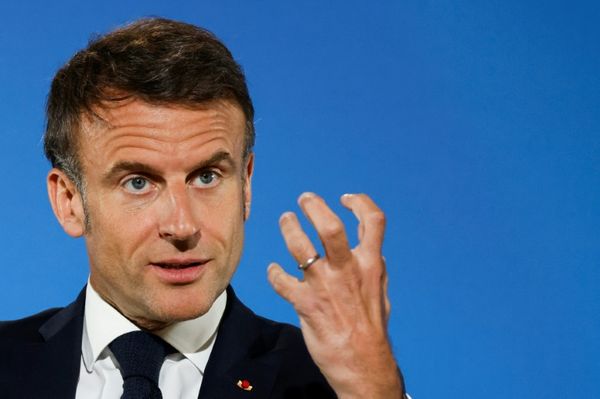
Waking amid half-empty bottles, dried sick and dead roaches (figuratively and literally), and despite all efforts to remain jaded and louche, your correspondent regrets to report feelings of excitement, hope and possibilities.
Labor victory — rah! More Greens — rah! But it’s the vast crossbench that really makes this special. Not because of its specific politics, much of which is too, well, tealy for me, but because of the structural transformation of politics it has created.
You’d have to say that the term “crossbench” doesn’t really describe the new arrangements. “Crossbench” is obviously, literally, a purely spatial one. Bob Katter is of the right, no matter what noises he makes about economic nationalism; the Greens obviously to the left. But there’s always been some sort of notion of the small groups and individuals there, moving between the major parties on either side.
How well does that describe what this election has given us? Not at all, I would have said, and the Westminster system idea of a crossbench obscures what has occurred, and exactly what has happened. We may have a 16-member crossbench. Exclude Katter and that gives you one left party (the Greens), one left-Green independent (Andrew Wilkie), a Labor-stronghold (!) independent (Dai Le), the teals as a social-liberal grouping, and two members from mildly centre-right electorates (Helen Haines and Rebekha Sharkie).
The difficulty with the concept of crossbench comes with imagining any possibility that any of these people would want to cooperate with the Coalition on any proposed legislation it could possibly come up with. There may well be — eventually — policies that could issue from the Coalition on economic matters that some teals might support, either personally or out of electorate demand.
But can anyone imagine that happening now, or in the next year? With the memory of Scott Morrison still fresh, and Peter Dutton not yet completing this marvellous makeover we’re being told about, the Coalition is toxic sludge. The vote for teals was clear: it was a vote for progressive candidates not as economically left as the Greens, but whose policies were all turned away from the Liberal Party.
In other words, the teals are not a successor to the Liberal Movement or the earlier Australian Democrats, groups explicitly positioning themselves in a dialogue with both parties, and as a sort of “loyal opposition” to the Liberal Party, which those earlier groups saw as having become a tad reactionary when it was far more to the left than it is now. The teals represent a new relationship between economic class, social class and political representation in Australia. (For a look at the early process of this forming, see my report on Kooyong Climate Action from 2019, which marks, so far as I can tell from a bit of searching, the first published use of the term “teal” for the light-blue that non-Green climate candidates were choosing. Happy to be corrected.)
What has happened cannot be accommodated on a single left-right spectrum. And it is quite extraordinary. The House of Representatives has become a multipolar house of assembly, without requiring the arrangement that usually makes that possible — multi-member proportional voting electorates. The Greens, teals, Wilkie and centre-independents now form a (loyal) progressive opposition, whose polar force begins to approach that of the Coalition opposition.
Don’t believe me? Take a look at the numbers. The Coalition opposition, if it holds together, will number about 52-54. Minus the Nats, the Liberal Party caucus room (including LNP Liberals) will number about 40-42 in the new Parliament. Forty out of 151! But wait, it gets better! If you strip out the Liberal-caucusing LNP seats, and regard it as a separate party — one which only lost a single seat, 23 down to 22 — then the Liberal Party of Australia has 26 seats in the new Parliament. Twenty-six seats, from five states and two territories, for the party that once ran the joint for decades on end.
Looking at it that way, the crossbenchers, minus poor old lonely Bobby K, can be seen as a third force, with sufficient shared ground on many of the most pressing issues of the day to have a political identity. Indeed, you could see it as having left (Green), centre (teal, Wilkie) and right (Haines, Sharkie) factions. That conception of them should not only come from outside; it should also come from within. Doubtless it already has, and the non-Green new members involved are working out ways in which to communicate and coordinate without becoming a party, or looking like one, which would become poisonous. Presumably, or hopefully, there will then be some form of process by which the teals communicate, coordinate and also differ with the Greens.
That is not going to be easy. Once the triumph and the cheering has died away, reality asserts itself. Parties work not merely as organisational frames but because they rein in individualism, not simply by application of the rules but by mythic and ritual practice — signing up, swearing in, colours, the social round, history, sacred ancestors and the like. Party discipline doesn’t need to be applied because it becomes, to some degree, internalised. Partydom can tame anarchy in the head before it becomes action.
The independents, even as some sort of network, don’t have that. They will have newer versions of that — greater social intelligence, dialogue, a degree of self-awareness arising from a largely female professional grouping — but independence is independence. Parliament is a theatre of emotion as much as reason. Labor may well make its clear majority, but it will be razor-thin if so — and in the case of some members, one jumbo bucket of hot chips away from a post-mortem byelection. You can bet it will be playing divide-and-rule — softer, subtler, but present nevertheless — from day one.
All the more reason then for this third force to find a way early on, to symbolically present itself as such without getting tagged as a party or a caucus, and without surrendering the notion of independence. That may not be easy either but expanding this transformation, in state elections and byelections to come, would seem to demand making clear in the public eye that this is not simply a provisional development in the two/three/four party business-as-usual idea of politics. It has arisen because, in a post-industrial, post-traditional society the relationship between social class, self, voice and knowledge has changed dramatically. In Westminster systems, Australia has, through sheer force of contradictions, innovated once again. (New Zealand? Doesn’t count. It shifted to multi-member proportional.)
In that respect this third force should, from the jump, be willing to push hard on the notion that it deserves to be treated as a more or less equal presence to the Liberal and National opposition, and not as an atomised crossbench of parties. That means thinking big about the possibilities. For all a candidate’s bravado on the stump, there’s nothing like the overwhelming architecture of the seat of government and its hallowed rituals to make even the most ornery type suddenly pliable.
Once again, I think the new members’ professional history will give them a head start — if you’ve had to deal with the managements of hospitals and academia, the old bullshit will be instantly recognisable in a new setting — but set against that is the knowledge-class tendency to want to see things as “beyond politics” and, through that, impose a disenfranchising technocratic political order.
If the teals get drawn into that, they will quickly come to grief.
Finally, of course, this unity won’t last forever. The tasks that are before the 90 or so MPs from the progressive side of politics are first those of policies responding to world crises, and then restoring the most basic practices of liberal democracy. But Labor went to the people having renounced tax increases, decrying a trillion-dollar deficit, and promising an era of “better lives” — and there’s going to be some tough decisions necessary soon. The possible imminent global recession, off the back of quantitative tightening, may bring things to a crisis for a party with a majority of two. When that occurs, many teals’ voters will be reminding them pretty quickly about who they represent and what, and unity — both intra-independent and with the Greens — may not be possible. But if so, some conception of an overarching unity would serve to make the divisions orderly ones.
Goddammit, something actually happened! Goddammit, there’s work to be done! And I was counting on a couple more days lying here among the empties.







